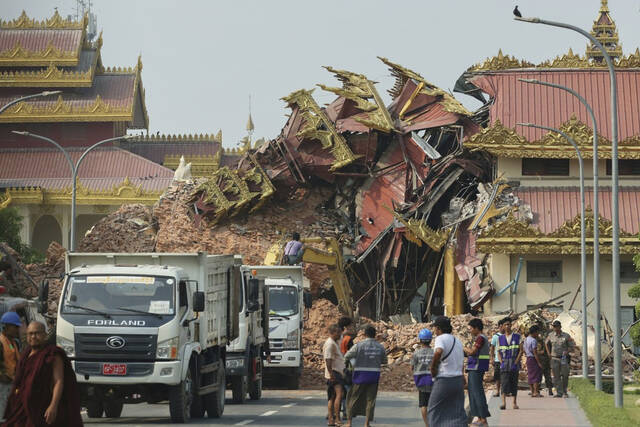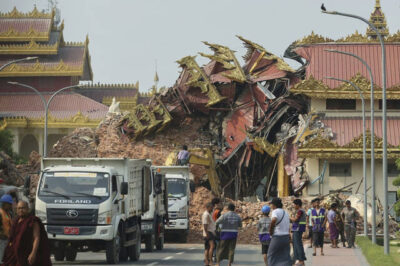
A Wake-Up Call from Myanmar’s Tragedy
The recent 7.7 magnitude earthquake in Myanmar and Thailand left over 2,000 people dead and more than 4,000 injured. Such catastrophic events in our neighboring countries serve as a stark reminder of the risks we face. While the world watches the aftermath, it’s crucial for India to reflect on its own vulnerability. The question isn’t if a major earthquake will strike India, but when and how prepared we are to face it.
India’s Earthquake Risk: A Looming Threat
India is perched on one of the world’s most earthquake-prone regions. The Indian and Eurasian tectonic plates collide, creating enormous pressure under the Himalayas. This geological tension has set the stage for a “Great Himalayan Earthquake” with a magnitude of 8 or higher – an event that experts say is overdue. The potential devastation could rival or even surpass the tragedies seen in Myanmar. The risk isn’t limited to the Himalayas; regions like North East India, Delhi, Mumbai, and Kolkata also face significant threats from subduction and intraplate earthquakes. With 59% of India vulnerable to seismic activity, the danger is national, not regional.
The Hidden Dangers Beneath Our Feet
In Myanmar, the earthquake was caused by a horizontal motion along the Sagaing fault – a strike-slip fault similar to California’s infamous San Andreas Fault. This type of earthquake results in shallow, intense shaking, causing widespread surface damage. India, with its diverse tectonic activity, faces different types of seismic threats. In the North East, the Indian plate is subducting beneath the Sunda and Burma plates, increasing the risk of massive subduction earthquakes and tsunamis. Meanwhile, central and Peninsular India are vulnerable to rare but deadly intraplate earthquakes, like the 1993 Latur quake that devastated thousands of lives.
A History of Earthquake Disasters in India
India has faced its share of seismic disasters. The 1905 Kangra earthquake, the 1934 Bihar disaster, the 1950 Assam quake, and the 2001 Bhuj tragedy in Gujarat are haunting reminders of our vulnerability. Each disaster triggered an initial wave of shock, followed by quick fixes and emergency responses. However, over time, the urgency faded, and the lessons learned were forgotten – leaving us unprepared for the next catastrophe. This cycle of complacency must be broken.
How Other Countries Have Learned from Disasters
Countries like Japan and Chile have shown the world how proactive measures can save lives. After devastating earthquakes, these nations invested heavily in earthquake-resistant infrastructure, stringent building codes, and advanced early warning systems. Their commitment to preparedness has drastically reduced the death toll and economic damage in subsequent quakes. India, despite facing even greater seismic threats, has yet to implement such comprehensive measures nationwide.
The Cost of Inaction: Lives and Economy at Risk
Earthquakes are not just natural disasters; they are economic disasters too. Over the past two decades, India has lost approximately $79.5 billion to climate-related disasters. The Bhuj earthquake alone cost Gujarat $10 billion, while the 2015 Nepal quake inflicted $7 billion in damage on northern India. Strong, earthquake-resistant buildings are not just life-savers – they’re cost-savers. Investing in safer infrastructure now will save billions in the long run.
The Urban Crisis: Rising Buildings, Falling Standards
India’s rapid urbanization is worsening the problem. Cities are expanding without proper planning, with lax zoning laws and poor enforcement of building codes. Many structures, including hospitals, schools, and critical infrastructure, are not built to withstand seismic activity. If a major earthquake strikes a densely populated city like Delhi or Mumbai during peak hours, the death toll could be staggering.
What India Must Do Right Now
Enforce Stronger Building Codes
India has established building codes designed to withstand earthquakes, but enforcement is weak, and many builders cut corners to save costs. Every new construction must adhere to these safety standards, with strict penalties for violations. The Bureau of Indian Standards (BIS) has set guidelines, but without rigorous implementation, they remain ineffective.
Conduct Regular Structural Audits
Structural audits are vital for assessing the safety of existing buildings, especially high-rises and critical infrastructure. However, there’s a shortage of qualified professionals to carry out these audits. Cities like NOIDA are making progress by partnering with institutions like IIT-Kanpur, Delhi Technical University, and the Central Building Research Institute Roorkee. Expanding these initiatives and training more experts is crucial for comprehensive safety checks.
Fixing Old Buildings
Many of India’s older buildings were constructed without earthquake-resistant features. Urban sprawl and corrupt real estate practices have resulted in unsafe structures. It’s essential to retrofit these buildings, especially hospitals, schools, and government offices, to make them more resilient.
Public Awareness and Safety Drills
Most Indians are unprepared for earthquakes because they lack basic knowledge about safety protocols. Regular safety drills in schools, offices, and public places can save lives. Every household should have an emergency kit with essentials like water, food, flashlights, batteries, and medicine. Schools must incorporate earthquake safety into their curriculum, teaching students about safe spots, warning signs, and evacuation routes.
Strengthen Critical Infrastructure
Hospitals, schools, and emergency services must be designed to survive earthquakes. Cities should maintain open spaces for safe evacuation, but unchecked urban growth is rapidly reducing these areas. The 2015 Nepal earthquake highlighted the dangers of collapsing hospitals, making it clear that emergency services must remain functional even after a major quake.
The Time to Act Is Now
A devastating earthquake will strike India. The question is not if, but when. Our nation is alarmingly unprepared. This is not just a government issue – it’s a collective responsibility involving architects, builders, city planners, engineers, and every citizen.
Doing nothing is the costliest option. The longer we delay, the greater the risk. The Myanmar-Thailand earthquake is a chilling reminder that disasters can happen anytime, anywhere. It’s time to turn knowledge into action, rules into reality, and awareness into preparation. India cannot afford another wake-up call. The time to act is now.








































Leave a Reply